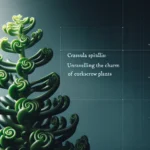Introduction to Crassula Rupestris
Welcome to the captivating world of Crassula rupestris, affectionately known in the succulent community as the ‘Stonecrop’ succulent. A true masterpiece of nature’s design, this charming plant has captivated the hearts of indoor gardeners and desert flora enthusiasts alike. Let’s delve into what makes Crassula rupestris a standout in the vast succulent landscape.
Originating from the rocky ledges and sun-kissed crannies of South Africa, Crassula rupestris has a storied past intertwined with the land’s diverse ecology. In its natural habitat, it thrives against all odds, flaunting its resilience. For those desiring a slice of African beauty within their urban dwellings, Crassula rupestris offers not just verdant visuals but a living testament to durability and grace under environmental pressure.
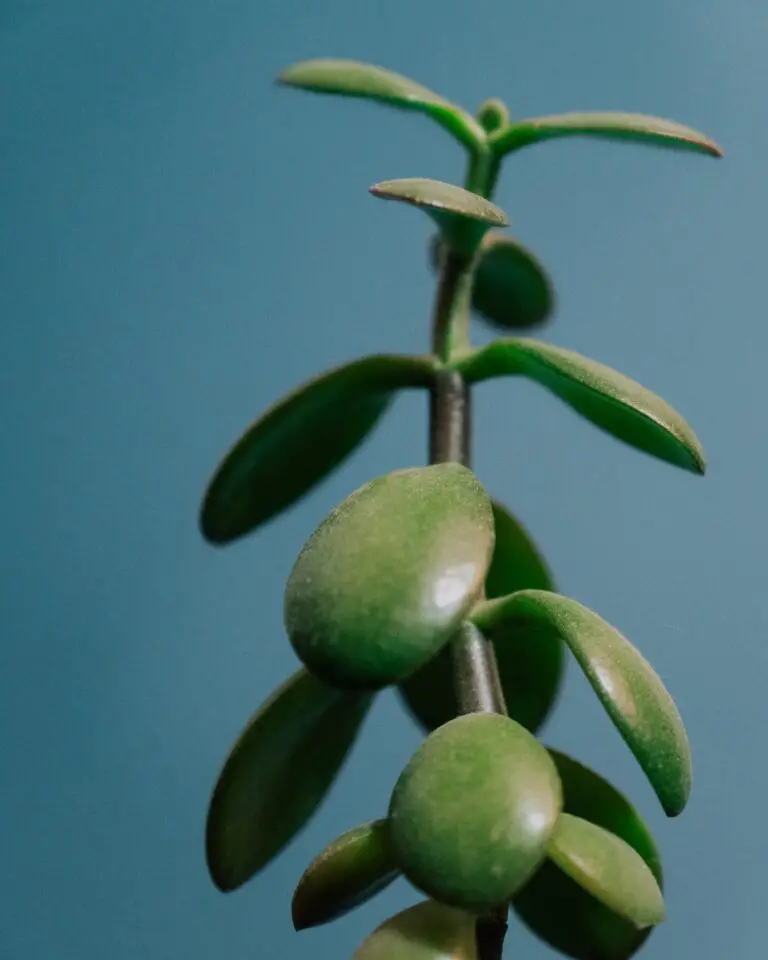
What sets this plucky succulent apart are its distinctive teardrop-shaped leaves, which cascade gracefully, forming a lush, overflowing pattern. Each leaf is a mini-reservoir, a survival adaptation that allows Crassula rupestris to hoard water during dry spells—very much like a camel of the plant kingdom. When the sun kisses its leaves, they blush with a rosy hue, an enchanting feature that’s a feast for the eyes.
For those embarking on their succulent journey, the right soil blend is crucial, and the Stonecrop is no exception. It yearns for a well-draining haven to sink its roots into—a concoction of coarse sand, perlite, and organic matter mimicking its ancestral grounds.
As we tenderly tend to our own Crassula rupestris gardens, it’s clear why this specimen enjoys a revered spot in succulent collections worldwide. For comprehensive insights and tips on nurturing this plant to its full glory, the experienced caretakers’ musings can guide us on our green-thumbed venture. To explore more about cultivating these stoic yet spectacular succulents, embark on a tour through our curated selection of various succulent types. As houseplants, they not only purify our air but also imbue our homes with a serene, living landscape—a slice of tranquility in our bustling lives.
Physical Characteristics of Crassula Rupestris
Meet the delightful Crassula Rupestris, a charismatic addition to the succulent family with an allure that enlivens any home or garden. This stonecrop wonder isn’t your average houseplant—it’s a captivating assembly of features that pleases the eye and ignites the curiosity. Let’s explore this green gem’s splendid characteristics!
Imagine a tapestry of chubby, Kayak-shaped leaves, each one layered upon the next, creating a delightful visual rhythm that either whispers a soft green or belts out a lively red-orange sunset hue, especially when kissed by the sun’s rays or chilled to a cheek-pinching cold. But the Crassula Rupestris is more than its leaves—its stems, fleshy and stout, support the leafy show, often blushing with the same sunset tones as the leaves transition from one season to another.
Spring blooms are like the crescendo in an orchestral piece; modest clusters of star-shaped flowers appear atop the foliage, transforming your garden’s scene and scent. These tiny flowers, often a soft hue of white or pink, are the understated crowns that turn a simple succulent display into a botanical masterpiece. The Crassula Rupestris dances in the breeze, its blooms nodding like a polite introduction to the approaching summer.
The plant’s structural beauty not only pleases aesthetes but also invites wildlife, becoming a pit stop for pollinators in the garden ballet. In a world where every balcony or backyard seeks that Instagram-worthy shot, the Crassula Rupestris is a natural star, its unique look vital in modern xeriscaping and minimalist indoor haven projects. Traverse the story of the Crassula Rupestris with us and uncover the tales penned by each delightful leaf and tender bloom.
For those who have not yet witnessed this succulent’s splendor up close, take a peek at this expert-led demo that reveals the secrets behind caring for Crassula Rupestris. Watch and become inspired to cultivate your very own breathtaking display.
What truly sets Crassula Rupestris apart is its resiliency and adaptability—not just surviving but thriving on neglect. Picture this: a succulent that offers a lush aesthetic without demanding the care that more high-maintenance plants would. It’s the perfect compatriot for the busy, modern-day plant enthusiast or the novice gardener dipping their toes into the enchanting world of succulents.
Optimal Growing Conditions for Crassula Rupestris
Cultivating Crassula rupestris, also known as the stonecrop succulent, may seem daunting, but fear not! With the right blend of sunlight, temperature, and humidity, you can easily foster a lush, healthy plant. Let’s dive into the specifics and help your stonecrop thrive!
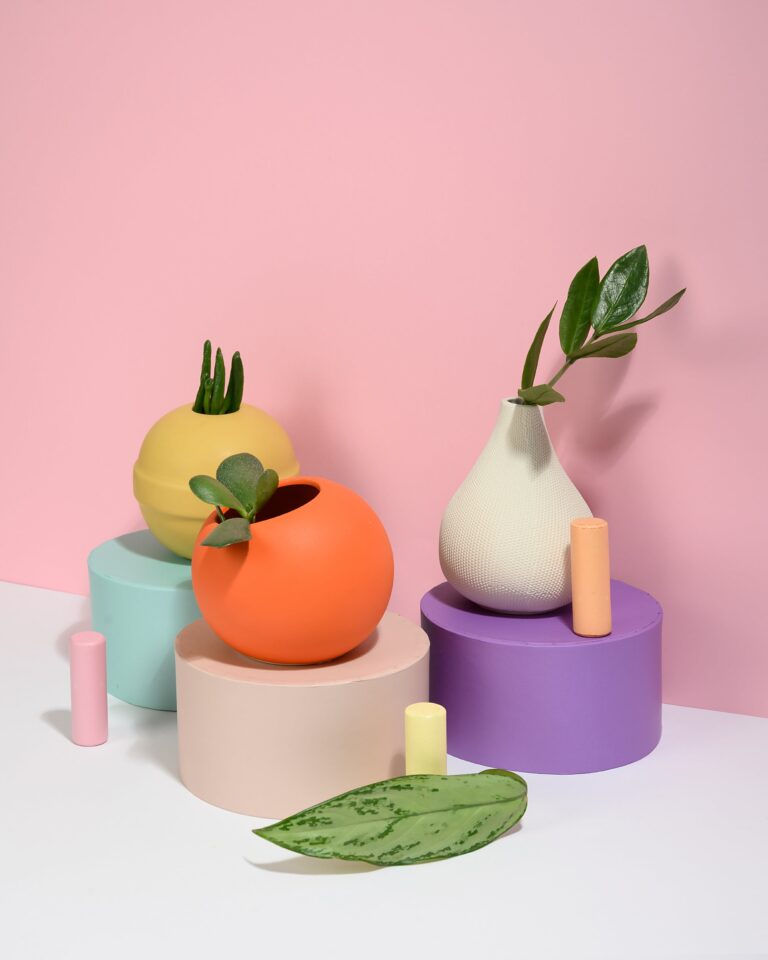
Sunlight: A Shining Beacon for Health
Picture a typical day in the rocky outcrops of South Africa, where Crassula rupestris naturally basks in the abundant sunshine. To echo this environment at home, provide your stonecrop with bright, indirect light for most of the day. A windowsill that catches the morning or late afternoon sun makes for an excellent stage. If you notice the leaves turning a vivid red, that’s your succulent’s “tan,” suggesting the amount of sunlight is just right!
Temperature: The Sweet Spot for Stonecrop Succulents
These resilient plants crave temperatures that mimic their native habitat—moderately warm and never too cold. Aim for a comfortable 65-75°F (18-24°C) during the day, and a slight dip at night. Too-hot temperatures can stress your plant, while frosty conditions could spell disaster. To avoid sudden temperature changes, keep your stonecrop away from drafty windows during cold seasons and blazing hot surfaces in the summer.
Humidity: Balancing Moisture in the Air
A common misconception is that succulents love dry air. The truth, however, lies in balance. While Crassula rupestris tolerates dry conditions, it still enjoys some humidity—think of a morning dew clinging to its fleshy leaves. Strive for moderate humidity levels, avoiding overly arid or damp spaces. In homes where the air tends to be dry (especially in winter), consider placing a pebble tray with water beneath the pot or utilizing a small humidifier.
Understanding your Crassula rupestris‘s needs makes the journey of cultivation a walk in the park. By unveiling the natural rhythm of this southern gem, you can create a thriving haven for your stonecrop. For more succulent wisdom, explore The Ultimate Guide to Succulent Care, and let your green thumb truly shine.
Soil and Planting Requirements for Crassula Rupestris
We all know that the key to a thriving plant is its foundation, and the Crassula rupestris is no exception. A Stonecrop’s best friend is the soil mix it calls home, and finding the perfect blend can make a world of difference for this charming succulent.

Picture this: you’ve just brought home a Ravishing Rock resident (yes, that’s a playful nickname for Crassula rupestris!) and you’re eager to give it the boutique hotel experience. First up, we’re talking real estate – the soil. This succulent loves a cozy, well-draining mix that’s like a plush duvet for its roots – think coarse sand, perlite, or volcanic rock mixed into a standard potting soil.
Now, let’s chat about moving day – potting and repotting. Crassula rupestris isn’t too picky, but it certainly wouldn’t say no to a roomy pot. Pots with drainage holes are like penthouse suites with skyline views for these plants. A word to the wise: be sure to repot your succulent every couple of years or when you notice its growth starting to plateau. It’s kind of like upgrading to first-class for your plant’s root system!
Remember, Crassula rupestris doesn’t want to swim, so ensure the soil is like that perfect beach vacation – moist but not waterlogged. With the right soil mix, your Stonecrop will be less of a diva and more of a radiant rock star in your garden or living space.
Watering Schedule for Crassula Rupestris
Welcoming Crassula rupestris into your home means embarking on an exciting journey with a resilient, yet thirsty companion. Just like any avid traveler, your Stonecrop succulent craves a sip of water—but not too much! It’s all about finding that perfect balance to keep your green buddy thriving. Let’s dive deep into the watering know-how to make sure your Crassula rupestris is as happy as a clam in its cozy pot!

How Often to Alley-Oop the Aqua?
Think of watering your Crassula rupestris as a rhythmic dance rather than a rigid routine. Unlike those high-maintenance plants demanding a droplet drop schedule, Crassula rupestris grooves to the beat of its own drum, or in this case, to the dryness of its soil.
The key is to check the topsoil—the terra firma of your plant pot. Is it dry to the touch? If your finger plays peekaboo in the first inch of soil and comes out clean, it’s showtime for the watering can! Once every week or two during growth season is your golden ticket, while winter calls for a watering siesta, with fewer curtain calls, maybe once a month.
It’s not just about when but also about how you water. Your Crassula rupestris is a lover of deep, soulful watering sessions. Think of it as a deep conversation rather than a small talk. You want to quench the thirst deeply, but not drown the discussion. Allow the water to run free through the drainage holes, ensuring your succulent’s feet aren’t left soaking.
Signs You’re Drowning the Spirit
Too much love can be a bad thing, and the same goes for watering your Crassula rupestris. An overwatered succulent is like a soggy pizza—just not right. Be on the lookout for leaves that are more bloated than a stuffed teddy bear or have a transparent complexion. These are your plant’s subtle (or not so subtle) cries for help.
Avoid the plant equivalent of a food coma by scaling back on the aqua. Let the soil dry out like a sunbather on a beach before indulging it with another drink. Catching these signs early can stop the rot, literally. It’s all about striking that delicate balance between nurturing and coddling.
Getting your watering schedule spot-on is more art than science, akin to finding the perfect pitch in a tune. When you nail it, your Crassula rupestris will grow with gusto, flaunting its verdant vibrancy as a testament to your excellent plant parenting skills!
Fertilization and Nutrient Management
Feeding your Crassula rupestris, a charmer among the stonecrop succulents, is less about sticking to strict schedules and more about understanding its needs. Imagine you’re a chef—your goal is to provide a balanced diet that keeps your green buddy flourishing. Let’s whip up the perfect nutritional plan for your plant!
Choosing the Right Fertilizer
First up on the menu is the choice of fertilizer. Think of your Crassula rupestris as having a refined palate. It thrives on a low-nitrogen succulent blend, which encourages strong roots without spurring rapid, weak growth. These specially formulated plant foods usually come with a 5-10-5 or 2-7-7 ratio—these numbers are like a secret recipe that promises vibrant health.
I wandered into the local greenhouse one balmy afternoon and overheard a pro gardener discussing his top pick—a balanced, controlled-release fertilizer that gradually feeds over several months. This slow and steady approach won the race, avoiding the burn that fast-acting fertilizers might cause. Take a leaf out of his book and give it a go!
Timing the Treats
Now, when do you serve up these nutritious meals? Your Crassula rupestris is an active grower during the spring and summer months, which means this is prime time for fertilizing. A sprinkle of granular fertilizer at the onset of spring, followed by a light liquid feed halfway through summer, is like a two-course feast for your plant—just enough to sate its appetite without overindulgence.
A fellow succulent enthusiast shared his tale of winters past, where he held back on fertilizer like a hibernating bear conserves energy. His Crassula rupestris entered a rest phase, where extra nutrients could potentially do more harm than good. Emulate his patience, and wait until winter’s chill has lifted before serving up fertilizer again.
To sum it up, think of fertilization as a gourmet experience for your green gourmet—Crassula rupestris. The right type, amount, and timing of fertilizer application will turn your succulent care routine into a culinary art form that nourishes and strengthens. Keep it simple, balanced, and in tune with the plant’s growth cycle, and you’ll find your stonecrop succulent as content as a well-fed epicurean.
Pruning and Maintenance
Meet the Crassula rupestris, a succulent that’s as tough as it is charming. Comparable to a miniaturized majestic tree, your Stonecrop look-alike craves a bit of attention to thrive. And just like any intrepid plant parent, you’ll need to wield your pruning shears with precision and a splash of love. Let’s get snipping!
Pruning isn’t just about making your plant look neat. Imagine shaping its destiny, guiding its growth like a navigator’s compass. Here’s the down-to-earth guide: hunt down any leggy branches resembling outstretched arms reaching for a hug—they are your prime suspects. Snip them gently, right above a leaf node, and watch as your plant responds with gusto, sprouting bushier than a squirrel’s tail in winter!
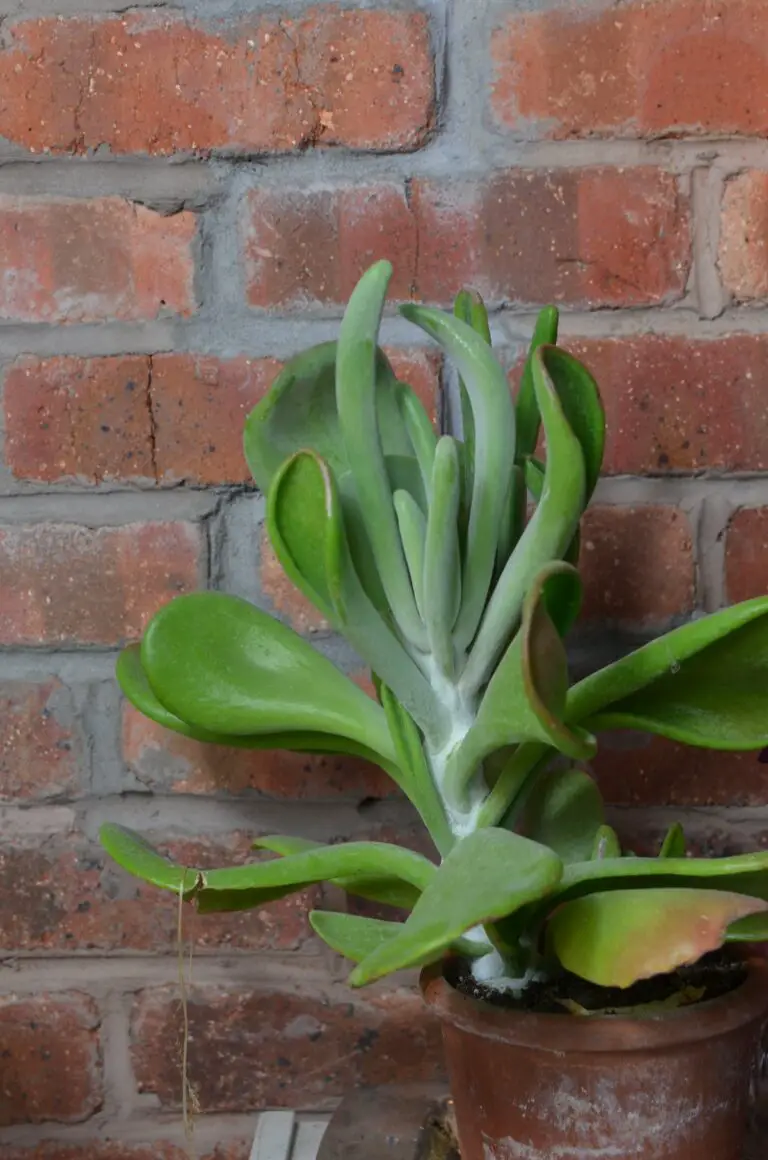
The spill is real; those falling leaves and withering branches aren’t just an eyesore—they’re the plant version of a “Help me” sign. These cast-offs can harbor unwanted guests like fungi and pests, plotting a coup against your plant’s health. Sweep away the detritus, and you’re not just tidying up, you’re standing guard against potential plant pandemonium.
But beware, overzealous clippers! Crassula rupestris isn’t fond of over-pruning; it’s a “less is more” champion. Trim sparingly and thoughtfully, as each cut is a conversation with your plant, negotiating its future shape and well-being. Like a sculptor chiseling away marble, reveal the masterpiece within through careful consideration and slight adjustments.
There you have it, the art and science of nurturing your succulent stonecrop. With gentle snips and regular cleanups, your Crassula rupestris will flourish, showcasing its geometric leaves and verdant vigor. Happy pruning!
Unlock the Secret to Propagating Crassula Rupestris
Ever wish you could multiply your cherished Crassula rupestris, creating a lush landscape of stonecrop succulents? Good news: it’s easier than you think! Let’s dive into the straightforward, yet magical world of propagating your Crassula rupestris.
Starting from Cuttings: A Snip in Time
Imagine taking a small piece of your Crassula rupestris, planting it, and watching it develop into a full-grown plant. That’s exactly how simple stem cuttings can be. Choose a healthy stem, snip off about 2-4 inches, and let it callous over for a day or two. Then, nestle it into well-draining soil, provide bright, indirect light, and just like that, you’re on your way to a new plant!
Leaf Propagation: Small But Mighty
Don’t underestimate the power of a single leaf. You can actually grow a whole new Crassula rupestris from one! Gently twist a leaf from the mother plant, ensuring you get the whole base. Allow it to dry for a few days until the end callouses. Press it into the soil and wait for the magic to happen. Keep the soil slightly moist, and in time, you’ll see tiny roots and a new plant emerging.
Offsets: Nature’s Way of Cloning
Offsets are basically baby Crassula rupestris plants ready to stand on their own. Look for these little clones around the base of your plant, carefully separate them, and plant them into their own home. With the same care as the parent plant, these babies will flourish and grow.
Incorporating these techniques into your gardening practice not only expands your Crassula rupestris collection but also connects you to the cycle of growth and renewal. With each new plant, you’re creating a legacy of greenery to admire and share.
Check out this informative video that will walk you through the delightful process of Crassula rupestris propagation:
Remember, each little leaf or cutting has the potential to become a thriving Crassula rupestris. It’s a sustainable and rewarding way to enhance your collection and share with friends. So go ahead, give these techniques a try and watch your succulent sanctuary grow!
Pests and Diseases
There’s nothing quite like the moment you realize your beloved Crassula rupestris has become a snack bar for pests or is wilting because of some mysterious ailment. The frustration is real! But don’t worry, fellow succulent enthusiast; we’re about to arm you with the know-how to identify and show these freeloading pests the door, and get your plant back to its thriving, glossy-leaved glory.
Common Crassula Culprits
First, let’s talk about who these uninvited guests might be. If you notice tiny critters on your plant, chances are they’re either aphids, mealybugs, or spider mites. Aphids are like the vampires of the plant world, sucking out the sap and leaving your leaves looking limp and lifeless. Mealybugs are the ones leaving a cottony deposit behind – it’s not just poor housekeeping; it’s an infestation! And spider mites? Well, let’s just say they can weave a web of destruction if left unchecked.
Fighting Back Naturally
Before you reach for the chemical warfare, let’s consider some gentler approaches. For starters, a good blast from your water sprayer can dislodge the tiny pests without harming your Crassula. It’s like sending them on a one-way trip down a water slide, sans fun. Then, there’s neem oil – nature’s pest control. It’s like handing out eviction notices on a molecular level, disrupting the pests’ life cycle without adding toxins to your home. Just remember, it’s a marathon, not a sprint; consistency is key with these remedies!
If the invasion has gone too far, a systemic insecticide could be the next step. Think of it as the heavyweight champion in the fight against pests. It gets absorbed by the plant and takes out the suckers from the inside out. It’s powerful stuff, though, so gloves on, follow the directions, and keep it away from pets and children.
Disease Dilemmas
Now, onto diseases. A common symptom to watch out for is leaf spots. They’re like the plant’s way of crying for help. Fungal infections are frequent flyers in the world of succulents, and they thrive in the damp. So, falling leaves, spotting, and general malaise in your plant could signal it’s time to scale back on the love – as in water love. Overwatering is often the root of the problem (pun intended).
Prevention is better than cure, right? Exactly! Ensuring good air circulation, avoiding waterlogged soil, and giving your plant its own personal space away from other plants will make a world of difference. It’s the equivalent of teaching your Crassula rupestris some self-defense moves against the microscopic baddies.
Remember, plants are a lot like us – they need a good balance to stay healthy. So, keep an eye out for signs of stress, know your enemies, and be ready to act. With a little vigilance and care, your Crassula rupestris will be less of a pest’s playground and more of the robust, serene stonecrop succulent it’s meant to be.
Design and Decorating with Crassula Rupestris
When it comes to livening up your living space, Crassula rupestris, also known as the Stonecrop Succulent, is a charismatic choice. This hardy little plant brings both charm and ease to any design scheme—with its thick, fleshy leaves that add a pop of greenery against any backdrop. Interior spaces thrive with a touch of nature, and this succulent is just the right pick for a modern, minimalistic home or even a rustic country house.
Imagine your kitchen window sill lined with small, earthenware pots of Crassula rupestris, basking in the golden hour sunlight. Not only do they make a pictorial ensemble against the warmth of indoor lighting, but they also purify the air as you go about your daily chores. Or perhaps, the charm of Crassula could be the focal point of your dining room table, set in a turquoise bowl, surrounded by a cluster of votive candles that play up its jade-like leaves.
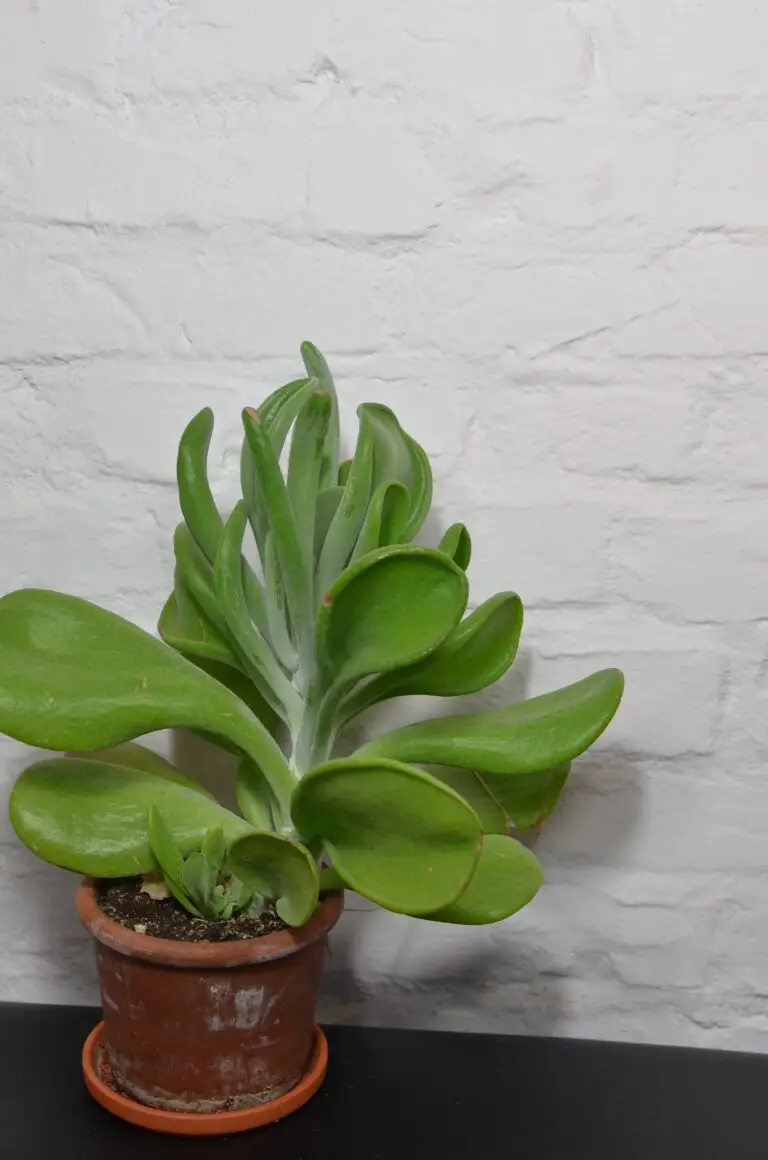
Outdoors, Crassula rupestris makes for the perfect accent in balcony rail boxes or as star players in a rock garden. These resilient plants enjoy the sun, and their sculptural beauty stands out against stone and gravel creating an almost Zen appeal. They work wonders in transforming an overlooked corner of your patio into a delightful green nook. Additionally, these plucky succulents hold up exceptionally well against varied weather, making them superb for year-round exterior design.
For the industrious DIY enthusiast, why not take a jab at creating a living wall with Crassula rupestris? By mounting a grid of these succulents, you can cultivate a verdant tapestry that breathes life into any outdoor or indoor area. It’s a remarkable way to blend art with nature—providing visual texture while also catering to the wellness of these effervescent little plants.
No matter where or how you decide to decorate with the vibrant Crassula rupestris, its cheerfulness is infectious. It’s the perfect plant to forge a design that speaks of aesthetic pleasure as much as it rings of botanical wellbeing—a truly sublime combination.
Conservation and Environmental Impact
The Crassula rupestris, commonly known as the Stonecrop, isn’t just another pretty succulent to add to your collection. It’s a champion in the realm of conservation and a superstar in sustainable gardening. But what makes this plucky little plant a hero in the plant world? Let’s dive into the life-sustaining qualities of this drought-tolerant warrior.
The Mighty Miniature: A Conservation Powerhouse
As climate change continues to rear its challenging head, conservationists are turning to resilient species like the Crassula rupestris for solutions. This succulent punches well above its weight class when it comes to surviving in arid environments. Its ability to thrive with minimal water makes it an excellent candidate for conservation projects aiming to restore and rewild parched landscapes.
Picture this: a once-depleted region, now bouncing back to life with these little green troopers. They’re not simply surviving; they’re helping create a thriving ecosystem. Their presence attracts pollinators, providing a food source for local wildlife and encouraging biodiversity. It’s like watching a barren canvas being painted with sweeps of green brushstrokes by nature’s own hand.
On the Frontline: Battling Soil Erosion
It’s not just in the realm of conservation where Crassula rupestris makes its mark; it’s also a front-runner in the fight against environmental degradation. This little succulent’s root system acts as a stronghold, clinging to rocky surfaces and preventing soil erosion. In areas where the land might otherwise be stripped away by wind and water, the Stonecrop stands guard, anchoring the soil and keeping the earth beneath our feet intact.
Imagine a hillside where these green guardians reduce the onslaught of erosion. They work in silence, but their impact echoes loudly. They nestle into cracks and crevices, weaving their roots into a living mesh that safeguards the soil, proving that even the smallest organisms can make a monumental difference.
Thriving with Thorns: The Eco-Friendly Choice
But there’s more to our little green friend than meets the eye. For the eco-conscious gardener, Crassula rupestris is a top pick. Its water-wise nature makes it a sustainable choice for landscaping, requiring far less H2O than your typical garden variety. This not only conserves water but also reduces the strain on our precious resources.
Envision transforming your garden into a drought-resistant haven, one where your green thumb doesn’t just beautify your surroundings but also does its part for the planet. The Stonecrop sets an example, championing a low-maintenance, high-impact approach to gardening that doesn’t just add aesthetic value but serves a greater ecological purpose too.
Frequently Asked Questions about Crassula Rupestris Care
Welcome, succulent connoisseurs and gardening newbies alike! Here’s a cozy corner for everything you’ve been itching to know about the charming Crassula rupestris. This is the go-to spot to quench your curiosity and ensure your stonecrop friend lives its best plant life. Read on to become the Crassula rupestris guru you didn’t know you needed to be!
How do I make my Crassula rupestris thrive indoors?
Imagine having a tiny, robust desert right on your windowsill! These rugged beauties adore bright, indirect light. Think about how the sun dances through the leaves of a tree in the Sahara — that’s the light play your Crassula craves. Keep it in a spot where the morning or afternoon sun filters through, and this succulent will show its gratitude with vibrant, plump leaves.
What’s the watering rule for Crassula rupestris?
Here’s a sip, not a gulp situation. These succulents store water in their leaves like a camel in the desert. Allow the soil to dry out completely between waterings, then drench it until water runs through the drainage hole — but no standing baths for this plant. Overwatering is a crime in the Crassula world, so think ‘desert rain’ rather than ‘tropical storm’ when you reach for the watering can.
Why do the leaves of my plant look wrinkly?
Wrinkled leaves aren’t just a part of plant old age; they’re a cry for hydration. If your Crassula rupestris leaves start to look like they need some ironing, it’s a sign to increase your watering frequency just a tad — like giving a parched hiker a refreshing gulp of water. But remember, moderation is key! Too much water could lead them to rot, much like sitting in a puddle would ruin your favorite jeans.
How often should I repot this succulent?
Think of repotting like giving your Crassula a roomier home as it grows. Every couple of years should do the trick, or when you see roots peeking out from the bottom of the pot. When you select its new residence, make sure it’s only slightly larger — these succulents love a cozy fit. It’s their version of a snug cottage versus a rambling mansion.
What kind of soil is best for Crassula rupestris?
Ever tried walking on a beach? Your Crassula’s roots love that same airy, well-drained environment that your toes dig into the sand. A succulent or cacti mix mimics its natural rocky habitat. Throw in some perlite or pumice for extra drainage, and you’re prepping a five-star soil suite ready for your Crassula’s root retreat.
Can you give me a visual guide on caring for Crassula rupestris?
Absolutely! Let’s take a visual break and draw some inspiration from those who have mastered the art of caring for these succulents. Watch below and observe firsthand how to propagate, water correctly, and provide the perfect amount of light for your Crassula rupestris to flourish.
Remember, every Crassula rupestris has its own personality, just like each of us. By giving it a bit of attention and the right care, it will grow into a unique and delightful addition to your plant family. Happy gardening!



